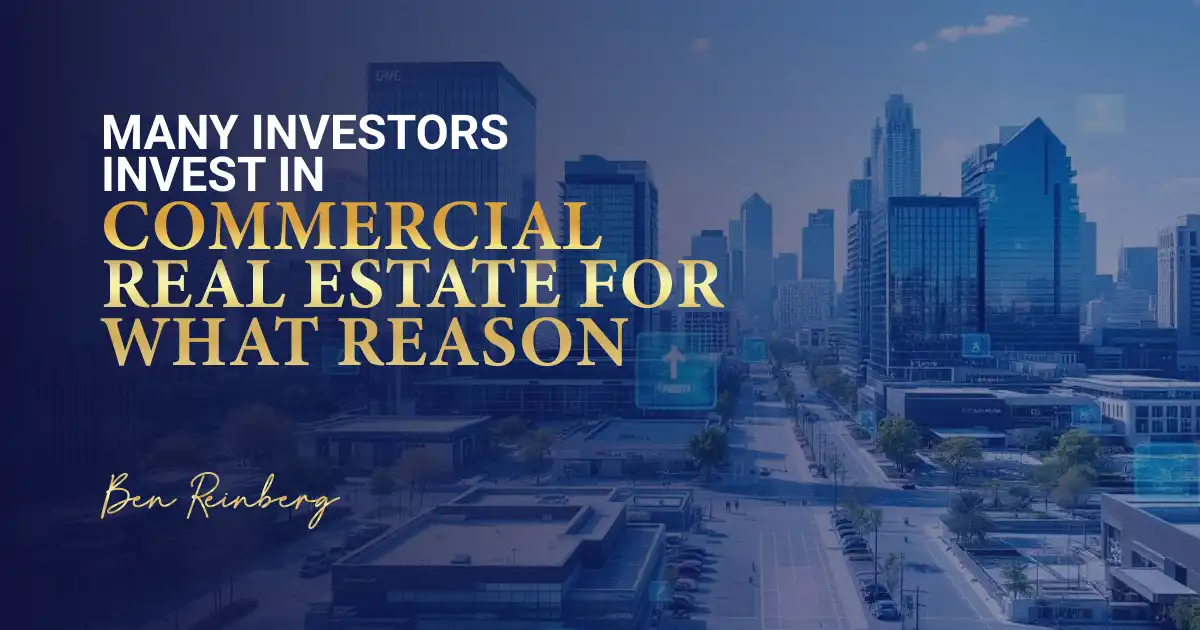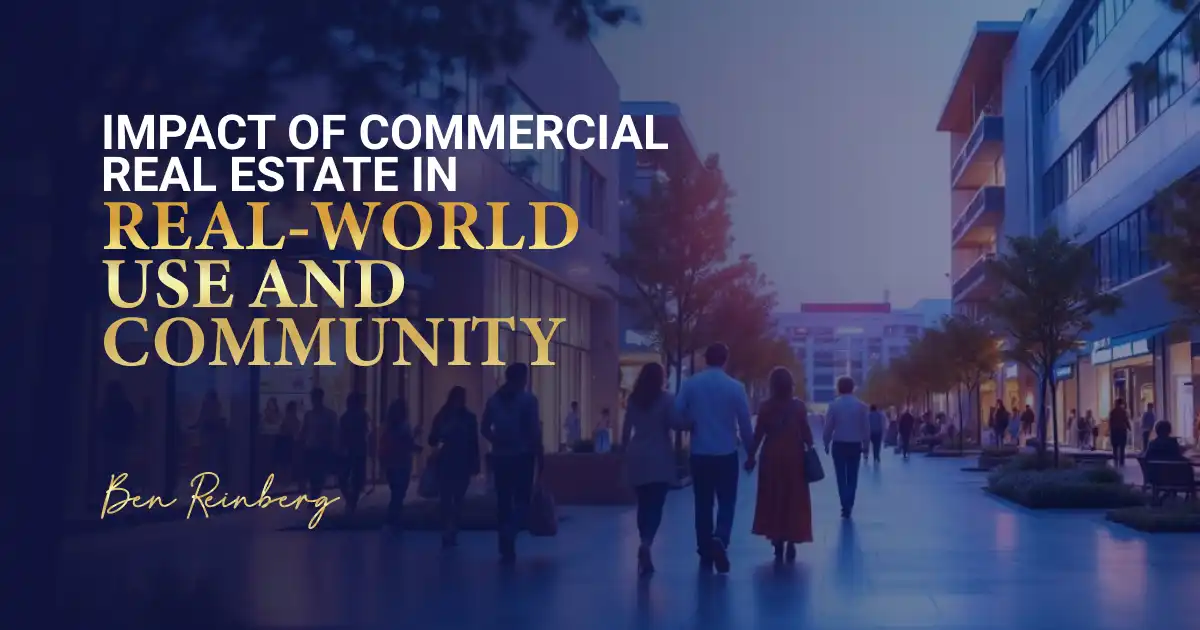
Why Real Estate is the Foundation of Wealth Creation
March 13, 2024
Discover the transformative power of a wealth mindset in real estate investment.
Read More >>>
According to the U.S. Census Bureau and the Federal Reserve, commercial real estate contributed over $1.2 trillion to the U.S. economy in 2023. That number speaks volumes CRE continues to fuel business growth, job creation, and long-term economic stability.
Investors turn to CRE not just for ownership, but for what it delivers: predictable income, long-term growth, and powerful tax advantages especially during times of market volatility.
It offers what most investments can’t:
At Alliance CGC, we’ve applied these same principles to build a $500M+ portfolio, delivering billions in transactions and a 28% historical IRR. Over 30 years, I’ve seen how these strategies create lasting wealth.
This isn’t theory it’s how financial freedom is built.

When it comes to building lasting financial security, few things offer the kind of stability that CRE does. Unlike residential leases, which tend to be shorter and more volatile, commercial leases often extend three, five or even 10 years, sometimes longer. This translates into a steady and predictable income stream that can support long-term goals, such as retirement planning, generational wealth or simply living with greater financial peace of mind.
Another unique advantage is the typical structure of expenses. In many cases, commercial tenants assume more financial responsibility for the property itself through triple net leases (NNN). That means they cover not only their rent but also property taxes, insurance and maintenance. This model lightens the load for investors and helps ensure more of your rental income flows directly to your bottom line.
One of the most compelling reasons investors gravitate toward commercial real estate is its potential for long-term value growth. Unlike stocks or cryptocurrencies, which can swing wildly with market sentiment, CRE tends to appreciate steadily, especially when located in high-demand areas or markets benefiting from infrastructure development, population growth or economic expansion.
While market appreciation plays a role, much of the growth comes from what investors do: renovating outdated spaces, improving operations and securing stronger tenants.
Take an older office building, for example. With upgrades to common areas, modern systems and improved lease management, the property not only attracts higher rents but also experiences a rise in overall valuation a process known as forced appreciation.
While buildings naturally depreciate over time, this isn’t a drawback it’s an opportunity. Strategic improvements help offset wear and tear, keep the asset competitive and turn aging into an opportunity for upside.
Learn more about how to start your ideal commercial real estate investment in this blog, “How To Get Started in Commercial Real Estate Investing.”
Beyond cash flow and appreciation, one of the most powerful but often overlooked advantages of commercial real estate is its tax efficiency.
As someone who has managed billions in transactions, I can tell you this with confidence: the tax code was built to reward commercial property owners.
Here’s how smart investors use it to their advantage:
These tax benefits aren’t fringe perks they’re foundational tools that help you build wealth faster, preserve more of what you earn, and reinvest with leverage.
Learn more about the essential strategies in CRE taxation before investing. Read our blog, “Commercial Real Estate Taxation: Tax Strategies for CRE Investors.”
Real estate moves to its rhythm and that makes it a vital part of a resilient portfolio. CRE allows for sector diversification across various industries, including medical office buildings, industrial, retail, multifamily and veterinary properties. Each sector carries its own risk and return profile, offering investors flexibility to align with their goals and risk tolerance.
It also offers geographic diversification. Whether in a high-growth suburban corridor, a revitalized downtown core or a rural distribution hub, there are opportunities to spread risk across different market dynamics. This ability to diversify across industries and markets gives CRE a unique edge, helping investors survive and thrive through economic cycles.
Many commercial leases include rent escalation clauses, which mean rent increases are scheduled annually or tied directly to inflation indices, such as the Consumer Price Index (CPI). This ensures that rental income keeps pace with rising costs, protecting purchasing power.
Furthermore, NNN leases standard in commercial leasing transfer a significant portion of the tax, insurance and maintenance burden to the tenant. That means your expenses don’t rise with inflation the way they might in residential real estate or other investments. You’re insulated while your income continues to grow.

When we think of CRE, we often focus on returns, cap rates and market cycles. However, behind the spreadsheets and lease agreements is something more meaningful: The role CRE plays in people’s everyday lives. Whether it’s the grocery store around the corner, the clinic that keeps families healthy or the warehouse powering small business deliveries, CRE directly supports how communities live, work and thrive.
Commercial real estate provides essential infrastructure that communities rely on:
Success in commercial real estate is more than just capital. It's about clarity of purpose, timing your moves and aligning with recession-resilient opportunities. As market dynamics evolve in 2025, smart money will flow into industrial, medical, retail, veterinary and multifamily sectors. These asset classes deliver income stability, tax advantages and long-term value creation.
However, seizing these opportunities isn’t about guessing it requires strategic insight, disciplined execution and a proven track record of performance. That’s how I’ve built a $500 million-plus commercial real estate portfolio over the last 30 years, with billions in transactions and a 28% historical internal rate of return (IRR), by focusing on assets that serve real communities and withstand market cycles.
Want to learn how to earn recession-resistant income and build lasting wealth? Let’s talk about your investment strategy.
Anyone with access to capital, good credit or investment partners can enter the commercial real estate market. You can start through direct property ownership, real estate syndications or real estate investment trusts (REITs). While experience is helpful, you can also learn as you go with guidance from professionals. Entry barriers vary by asset type and location. Focus on education, mentorship and building a strong team.
Start by identifying your budget, goals and risk tolerance. Then, analyze properties based on location, tenant quality and income potential. Work with a broker, attorney and property manager to guide you. Due diligence and financing preparation are key to getting started.
Focus on high-performing sectors like industrial, medical or multifamily real estate. Maintain conservative financing, build relationships with experienced operators and prioritize tenant quality. Add value through renovations or management improvements. Always plan for long-term sustainability, not just short-term returns.
Commercial real estate offers reliable income, tax advantages and portfolio diversification. It typically performs well during inflation and provides long-term appreciation. NNN leases and longer-term tenant contracts can stabilize cash flow. CRE is powerful in recession-resistant sectors, including healthcare, retail and industrial.
